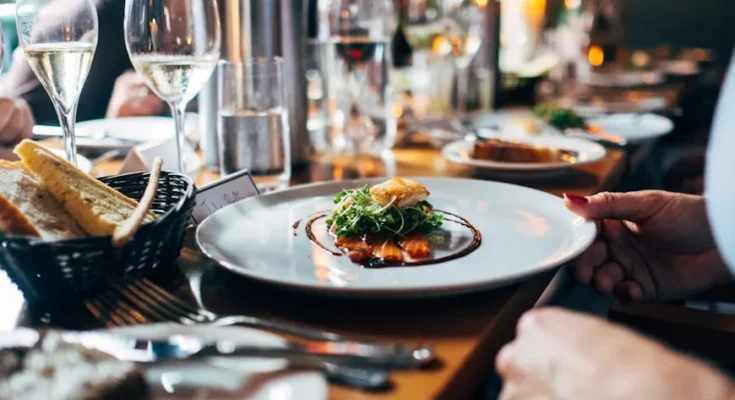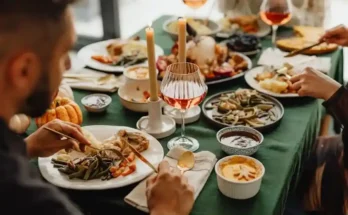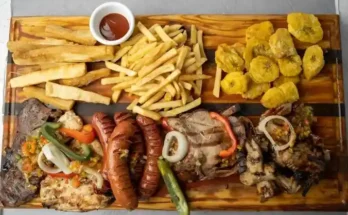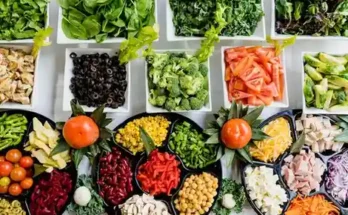Food is universal. It’s a daily necessity, a comfort, a pleasure, and often, an identity. But beneath the surface of recipes and routines, food is much more than mere sustenance. It tells stories, preserves cultures, triggers memories, and shapes how we connect with each other—and ourselves.
From the first sizzle in a pan to the final shared bite at a dinner table, food weaves its way through every chapter of human life. It nourishes not just our bodies, but our traditions, emotions, and communities. Every flavor carries meaning, and every meal has the potential to be a story worth remembering.
The Cultural Tapestry of Taste:
-
How Cuisine Reflects Identity
Every culture has a unique culinary fingerprint. A bowl of pho in Vietnam, a plate of pasta in Italy, or a spice-laden curry in India is more than just a regional dish—it’s a legacy passed down through generations. Recipes are inherited like family heirlooms, each one bearing the weight of history, geography, and personal memory.
Food is how people define who they are and where they come from. It’s often the first introduction to a new culture and one of the most powerful tools for preserving heritage in a rapidly globalizing world. Immigrants cook to remember home, and children learn to value their roots through shared meals around the kitchen table.
In essence, what’s eaten is as important as how, when, and with whom it’s eaten. The ritual of gathering, the etiquette, the ingredients—all come together to form an identity that’s deeply personal and inherently collective.
-
Culinary Crossroads in a Globalized World
The rise of fusion cuisine, food trucks, and international markets reflects a global culinary evolution. Borders blur on dinner plates. A taco might be filled with Korean bulgogi, or an Italian risotto might be infused with Thai lemongrass. This creative collision of flavors reflects a world that is more connected than ever.
Yet, in this delicious melting pot, there’s also a responsibility. Celebrating culinary diversity means respecting its roots—understanding where dishes come from, the hands that traditionally prepared them, and the stories embedded in their spices. True appreciation honors authenticity, even as innovation takes flight.
Food as Memory and Emotion:
-
The Psychology Behind Our Favorite Meals
Have you ever tasted something and been instantly transported back to childhood? Maybe it was the smell of fresh bread like your grandmother used to bake, or a holiday dish that brought back memories of laughter around a crowded table. Food is a powerful trigger of memory because it engages multiple senses simultaneously—taste, smell, touch, and even sound.
This emotional connection is why comfort food exists. It’s not necessarily the healthiest or most elaborate dish, but it provides familiarity and warmth. It’s a sensory hug that soothes more than just hunger. In tough times, people often return to the meals that remind them of safety, love, and belonging.
Food can also reflect emotional states. Craving chocolate during stress, or reaching for something warm and hearty on a rainy day, are not just coincidences—they are expressions of our emotional landscape written in flavors.
-
Celebration Through Cooking
Food has always played a central role in celebrations. Birthdays, weddings, religious holidays—all are marked with special meals that carry significance. From a Thanksgiving turkey in the U.S. to a Lunar New Year dumpling feast in China, food turns occasions into rituals and brings people together in shared joy.
Even everyday meals can become small celebrations when shared with others. A spontaneous brunch with friends, or a late-night snack during a heartfelt conversation, often leaves more lasting impressions than grand banquets. These are the edible memories that linger long after the dishes are cleared.
The Art and Science of Cooking:
-
Cooking as Creative Expression
While eating is universal, cooking is deeply personal. It’s a creative act—like painting or composing—where ingredients become your medium and flavor your brushstroke. A recipe might provide a framework, but each cook adds something intangible: instinct, personality, a pinch of love.
Home cooking, especially, is storytelling in motion. A dish evolves not only from its ingredients but from how it’s prepared, who it’s made for, and even the mood of the cook. Whether you’re crafting a multi-course meal or just throwing together a grilled cheese sandwich, the act of cooking reflects care and creativity.
Moreover, cooking offers autonomy in a world that often feels out of control. You decide the menu, the method, and the meaning. It’s an everyday chance to create something beautiful, delicious, and wholly your own.
-
The Science That Sizzles
Behind the romance of the kitchen lies a fascinating world of chemistry and biology. Cooking is, in many ways, applied science. The Maillard reaction—the browning that gives grilled meat or toasted bread its savory depth—is a chemical transformation. Emulsification lets oil and vinegar come together in silky harmony. Fermentation turns milk into cheese and cabbage into kimchi.
Understanding these processes not only improves technique but deepens appreciation. It’s a quiet thrill to realize that food is not just crafted—it’s transformed. The more you learn about how flavors develop, how textures change, or how temperatures alter ingredients, the more you begin to see cooking as both magic and method.
Nourishment and Well-Being:
-
Food as Medicine
Long before modern pharmaceuticals, food was the original healer. Across cultures, certain ingredients have been prized not just for taste but for their therapeutic properties. Turmeric for inflammation, garlic for immunity, and ginger for digestion—these ancient remedies are now backed by modern science.
The concept of “you are what you eat” has never been more relevant. Food can fuel or fatigue, heal or harm. What we put on our plates directly affects our energy levels, mood, cognitive function, and long-term health.
Today, the focus is shifting from fad diets to conscious eating. People are learning to listen to their bodies, to eat intuitively, and to view food as an ally in wellness rather than an enemy or indulgence.
-
Mindful Eating in a Fast World
In a culture of speed and distraction, we often consume food without awareness—snacking while scrolling, rushing through meals between meetings. This mindless eating disconnects us from the joy and purpose of food.
Mindful eating is a gentle revolution. It asks us to slow down, to savor, to notice. What does the first bite feel like? What textures are dancing on your tongue? What does full actually feel like—not just physically, but emotionally?
Eating mindfully is not about rules. It’s about relationships. It turns every meal into an opportunity for gratitude, reflection, and presence.
The Future of Food:
-
Sustainability on the Menu
As the global population grows and climate concerns escalate, the question of how we feed ourselves sustainably has taken center stage. The future of food involves innovation—plant-based proteins, lab-grown meat, vertical farming, and reduced waste practices.
But technology alone won’t save the planet. What we choose to eat, how much we waste, and where we source our food matters deeply. Supporting local farmers, eating seasonally, and reducing meat consumption are small steps that add up to significant change.
The future of food lies not only in what we create, but in what we choose to value.
-
Tradition Meets Innovation
Modern food culture is a fascinating blend of heritage and experimentation. Chefs reinterpret ancient recipes with modern flair. Home cooks try global dishes from YouTube tutorials. Farmers use drones while still honoring the rhythms of the soil.
This intersection of old and new keeps food vibrant. It ensures that while we move forward, we don’t forget the wisdom of those who came before us. The best meals often have one foot in tradition and the other in the future.
Conclusion:
At its simplest, food is fuel. But at its richest, it is a language, an art, a bridge, and a memory. It has the power to comfort, to connect, to delight, and to transform. In a single meal, we experience history, creativity, chemistry, and emotion.
Whether you’re plating a gourmet dish, packing a school lunch, or eating takeout with a friend at midnight, remember this: you are participating in something timeless and deeply human.
Because in every bite, there’s more than just flavor—there’s life. And that’s what makes food one of the greatest gifts of all.




